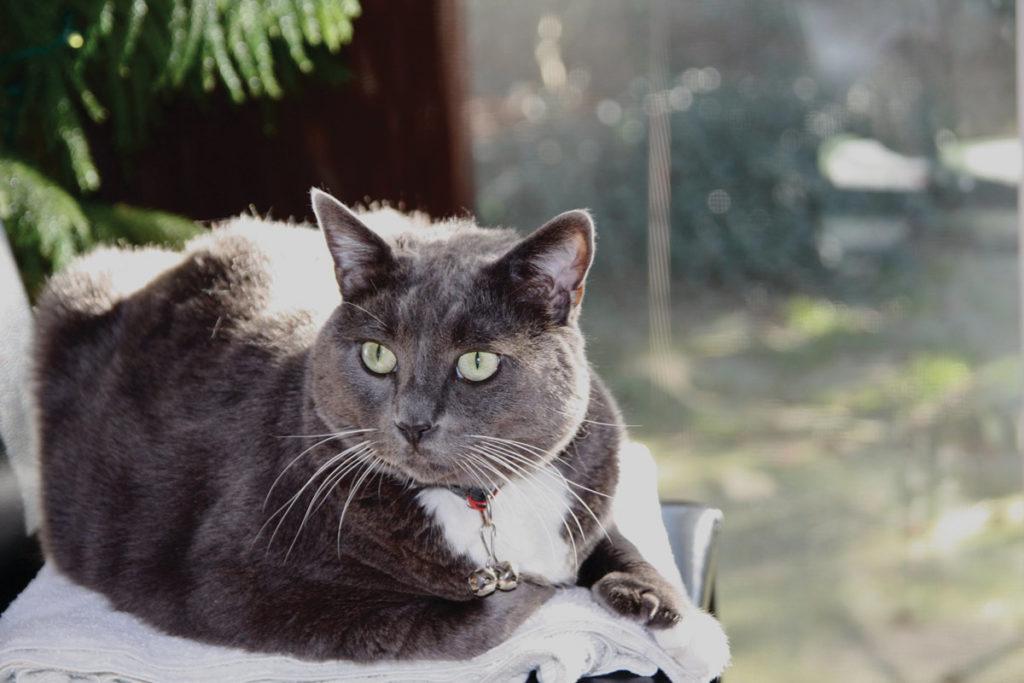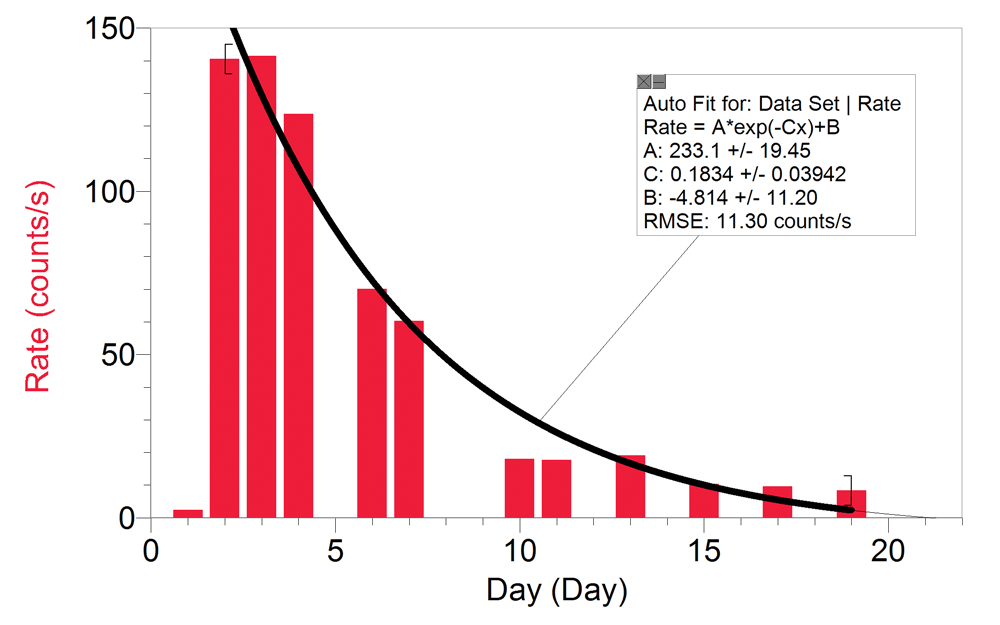By Gretchen Stahmer DeMoss

Rico, our 12-year old cat, was recently diagnosed with hyperthyroidism. Hyperthyroidism is a common endocrine disorder that is prevalent among older cats. A tumor in the thyroid gland causes overproduction of thyroid hormones, including thyroxine. Elevated thyroid hormone levels cause an increased metabolic rate, which puts stress on the heart, kidneys, and other organs. Treatment options include radioactive iodine (I-131), a lifetime of anti-thyroid medication, or surgery. We opted for I-131 treatment for Rico.
I-131 treatment involves intravenous administration of radioactive iodine. The cat and its waste are considered highly reactive for 7–14 days after treatment, so the treatment must be done at a specialized veterinary clinic. The half-life of I-131 is a little over 8 days. Rico stayed at the vet clinic for 10 days after his treatment.

For the next 18 days, a Vernier Radiation Monitor was used to collect 1800 s of data each day. The graph shows background radiation data in the house before Rico’s return (Day 1). Day 2 shows the radiation count rate with the monitor placed next to his body. Measurements were made at approximately the same time of day with the radiation monitor in about the same orientation. (Note: Sometimes cats aren’t cooperative during scientific investigations.) Data show an exponential decay over subsequent days. The fit corresponds to a half-life of about 4 days, different from the expected 8 days. We expected to measure a half-life somewhat less than the direct half-life of I-131, since the cat was losing I-131 by both radioactive decay and excretion of waste.
Rico’s T4 levels, the amount of circulating thyroxine in the bloodstream, were significantly lower at his one-month and three-month post-treatment blood tests. We’re hoping his hyperthyroidism is gone for good.
